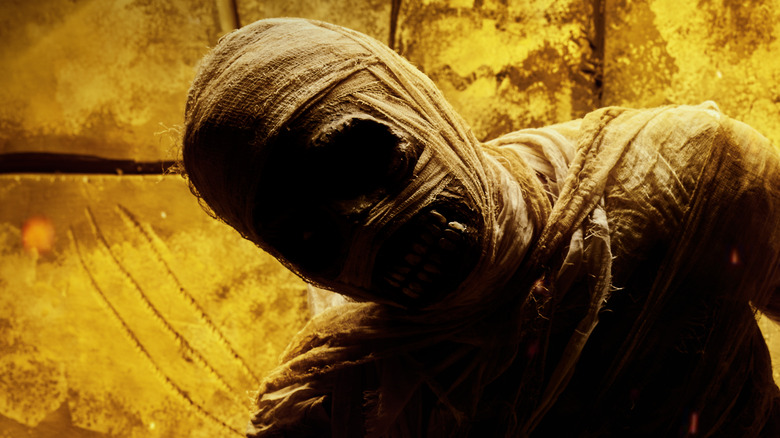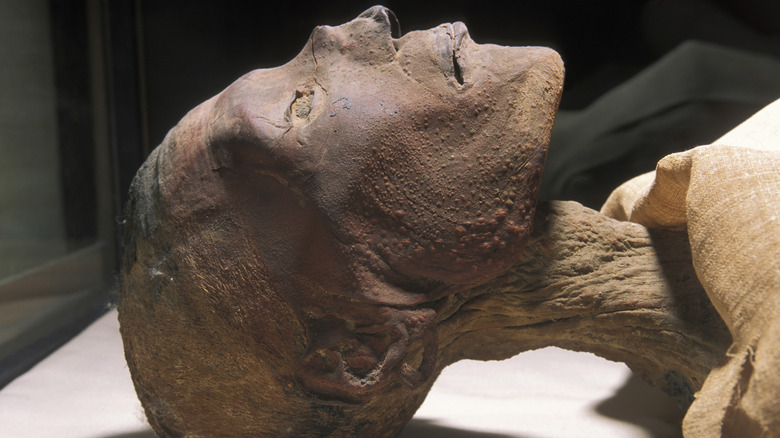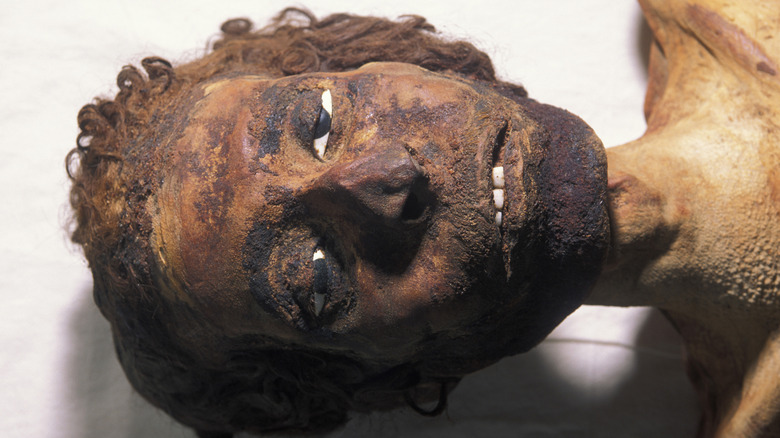Why People Once Ate Mummified Egyptian Bodies
History is rife with examples of strange beliefs and wild practices. Whether it's putting dolphins on trial in 1596 (via Live Science) or the medieval belief that Brussels sprouts were cursed (via Factinate), all were notions that were in vogue at one time or another. But perhaps one of the more unusual practices from medieval Europe is the consumption of mummies.
The exact origins of mummy consumption are hazy, but historians point to the 16th and 17th centuries as the time when the notion really took hold. According to Smithsonian Magazine, the practice wasn't limited to the poor or uneducated. In fact, it was the ruling class that made the practice mainstream — kings, queens, clergy, and scientists alike would take remedies comprised of ground-up bones or even blood obtained from mummies. As the Science History Institute tells it, the remains of Egyptian mummies could find their way into cures for dysentery, toothaches, and cataracts.
Mummified remains were sprinkled on top of just about anything
As for why the use of mummies as a medicinal surfaced in medieval Europe, the answer can be traced to the use of a petroleum-based product called bitumen. Used today in the creation of asphalt, bitumen had a completely different use in ancient times, per Britannica. According to the Science History Institute, bitumen was used for protecting broken bones and treating skin diseases. And as the use of bitumen became more and more fashionable, it became harder and harder to obtain.
Charlatans and grave robbers, looking to capitalize on the bitumen craze, mistakenly believed mummies found throughout Egypt were covered with the substance during the mummification process. Whether or not mummies were actually covered with some version of bitumen remains up for debate. But in medieval Europe, there was no doubt. As such, skulls were removed from mummified bodies, ground up, and ingested to cure headaches. Elsewhere, blood harvested from the mummified corpse was used to cure blood diseases in the sick, Smithsonian Magazine reports.
Into the Age of Enlightenment
As more and more scientific discoveries were made amid the Renaissance, the use of mummies as a cure-all began to wane — with the exception of the prevailing belief in something called a "thieves candle." A purportedly magic candle made from human fat, it was believed to paralyze its victims. While the use of the thieves candle lasted well into the 1880s, the practice of using mummified corpses for medicinal purposes began dying in earnest well before, Smithsonian Magazine reports.
By the mid 18th century, as more and more Europeans began using utensils to eat their food — coupled with the use of soap when bathing — beliefs in the mystical use of mummies began to drop off precipitously. According to some historians, these cultural landmarks propelled medieval Europe's belief system forward into the Age of Enlightenment and away from the use of human byproducts as medicines, per History.


